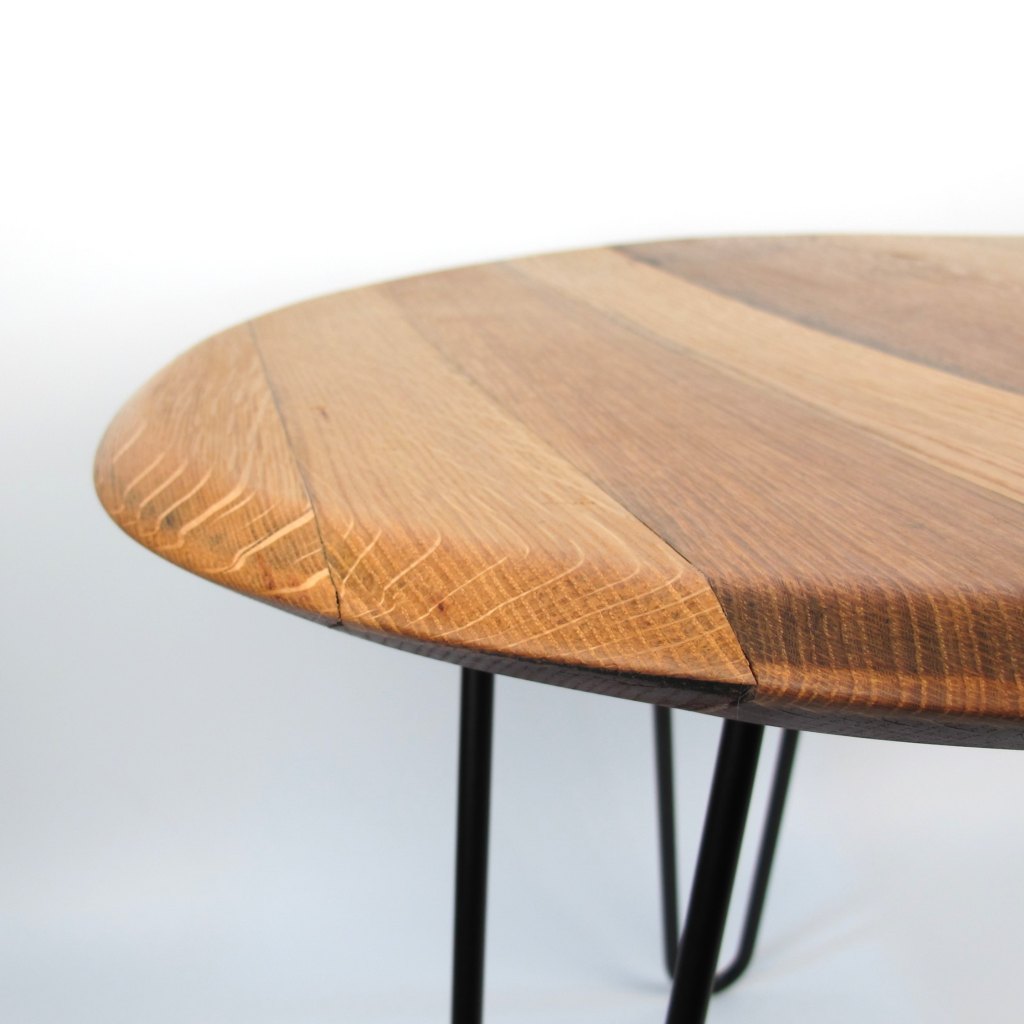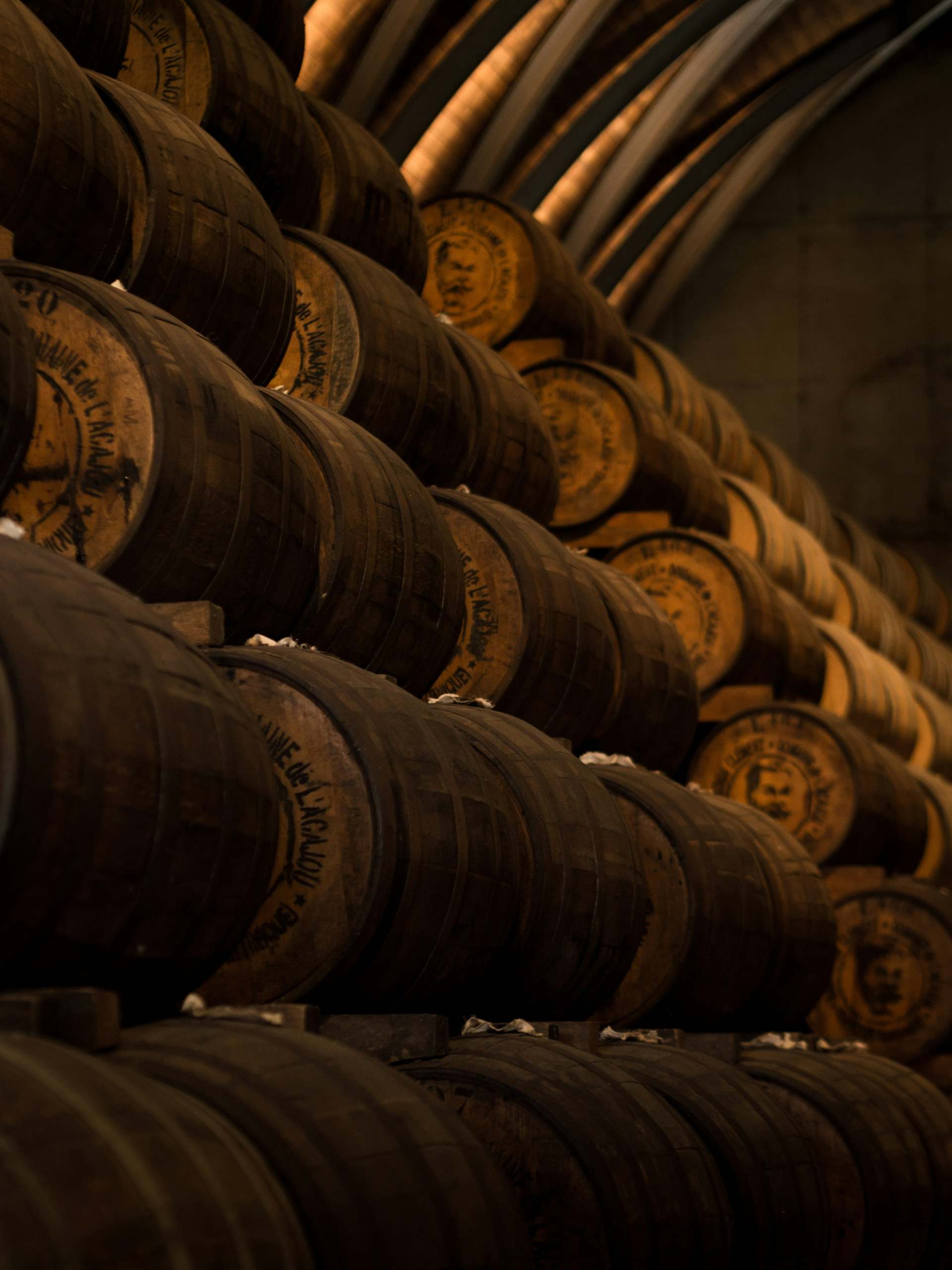Billy
Coffee table made from old wine barrel lid "Tonnellerie Palacoulo JM Gonçalves"
Coffee table made from old wine barrel lid "Tonnellerie Palacoulo JM Gonçalves"
Couldn't load pickup availability
Give your living room a rustic yet modern touch with our Billy coffee table.
This piece of jewelry was lovingly handcrafted from an old wine barrel lid from the French company "Tonnellerie Palacoulo JM Gonçalves". A red wine was stored in the wine barrel.
The black satin powder-coated steel legs give it stability and a modern look. The table top has been specially oiled to create a water-repellent surface and thus protect it from stains. The underside is colored accordingly by the storage of the red wine and is sealed by us to prevent discoloration. To ensure a stable and gentle stand depending on the surface, 3 feet for the table legs are included, which you can use as needed, but do not have to.
Each of our coffee tables is unique and sustainable, perfect for cozy evenings with a glass of wine.
Product Information:
Material: oak wood
Diameter: approx. 55cm
Table top thickness: approx. 3cm
Table height: approx. 42cm (Do you need a different height? Write to us!)
Note: You will receive the product you selected!
Only one of each is available as each piece is unique.
Feel free to contact us if you have any questions.
Details & Maße
Details & Maße
Material: Eichenholz
Durchmesser: ca. 55cm
Tischplattendicke: ca. 3cm
Tischhöhe: ca. 42cm oder 47cm wählbar (fotografiert mit 42cm Höhe)
Sie brauchen eine andere Höhe? Schreiben Sie uns!
Versand
Versand
Unsere Produkte sind Lagerware und werden nach der Bestellung schnellst möglich verschickt, so dass Sie die Bestellung in der Regel nach 2-3 Tagen erhalten.
Ab einem Bestellwert von 100€ liefern wir innerhalb Deutschlands versandkostenfrei.
Kontakt
Kontakt
Sie haben Fragen? Wir helfen Ihnen gerne weiter!
Schreiben Sie uns einfach eine E-Mail an info@handworkz.de oder nutzen Sie unser Kontaktformular. Gerne rufen wir Sie auch zurück, wenn gewünscht, hinterlassen Sie uns dazu einfach Ihre Telefonnummer mit der Bitte um Rückruf.
- Handarbeit | Made in Germany
- Tischplatte aus altem Fassdeckel
- 100% plastikfreie Verpackung











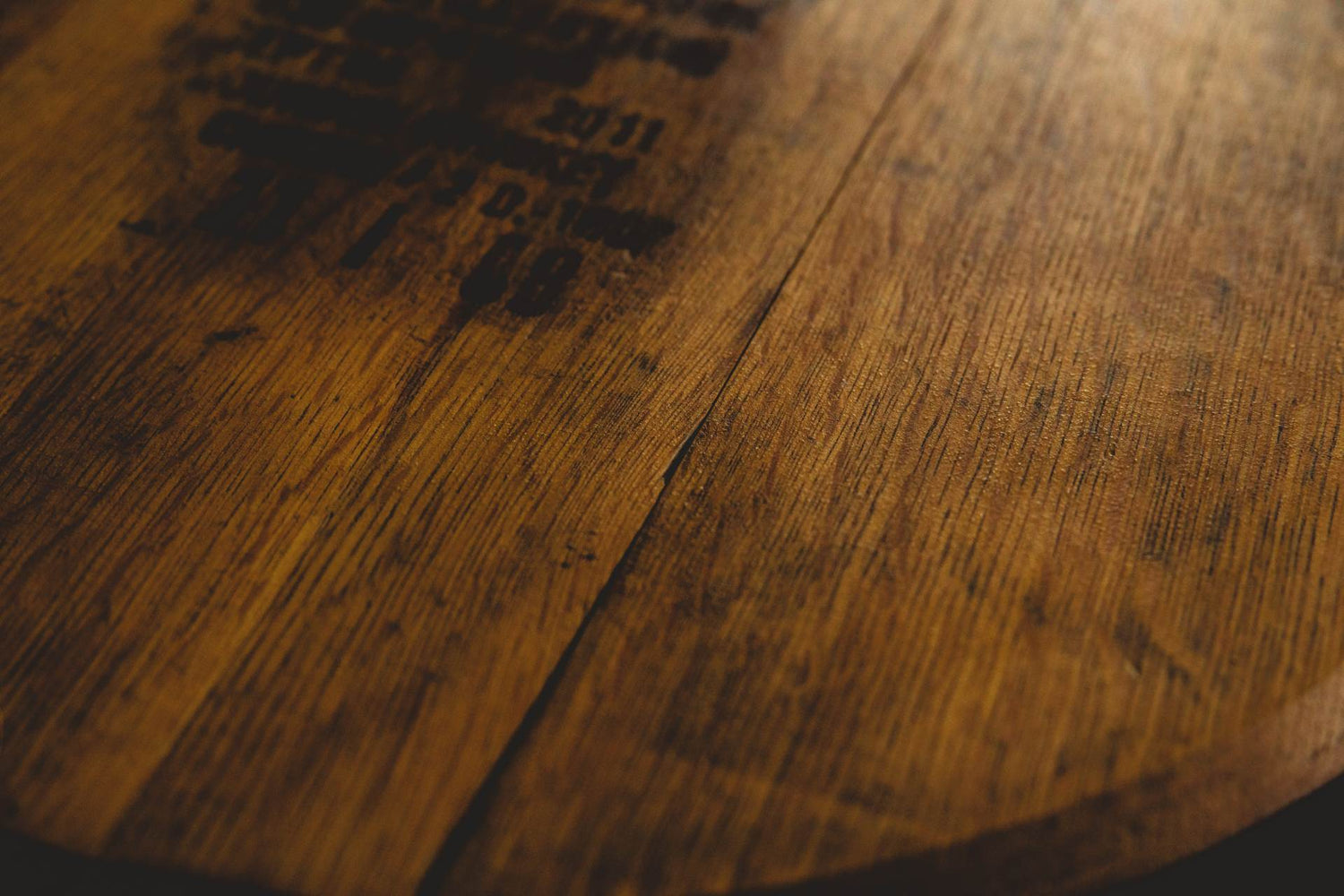
Als Basis für die Tischplatte unserer Beistelltische und für unsere Wanduhren verwenden wir ausgewählte Fassdeckel von Wein- und Whiskyfässern. Dies ist auch im aufgearbeiteten Zustand noch an den unterschiedlichen Prägungen der Winzer, Brennereien oder Fasshersteller zu erkennen. Bei den Deckeln alter Rotweinfässer auch sehr deutlich an der rötlichen Verfärbung der Unterseite erkennbar.
Fässer haben sich im Laufe der Geschichte als ein praktisches Mittel zum sicheren Transport verschiedener Güter, vor allem aber dem von Flüssigkeiten etabliert. Früher waren die Mittel aufgrund fehlender Technologie begrenzt, weshalb sich Holz als der beste Rohstoff zur Herstellung von Fässern herauskristallisierte.
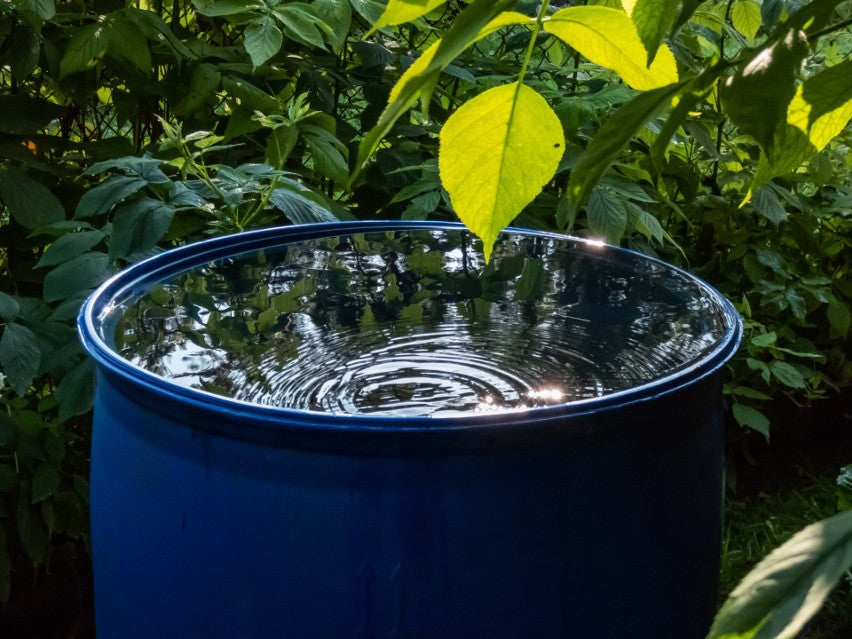
Heutzutage haben wir die Mittel und das Wissen, um Fässer aus den verschiedensten Materialien und in den unterschiedlichsten Formen bauen zu können. Beispielsweise zum Auffangen von Regen, die wahrscheinlich beliebtesten Regentonne, hergestellt aus blauem Kunststoff. Preiswert und zweckmäßig, über die Optik lässt sich streiten, wobei sie mittlerweile durchaus Kultcharakter besitzt.
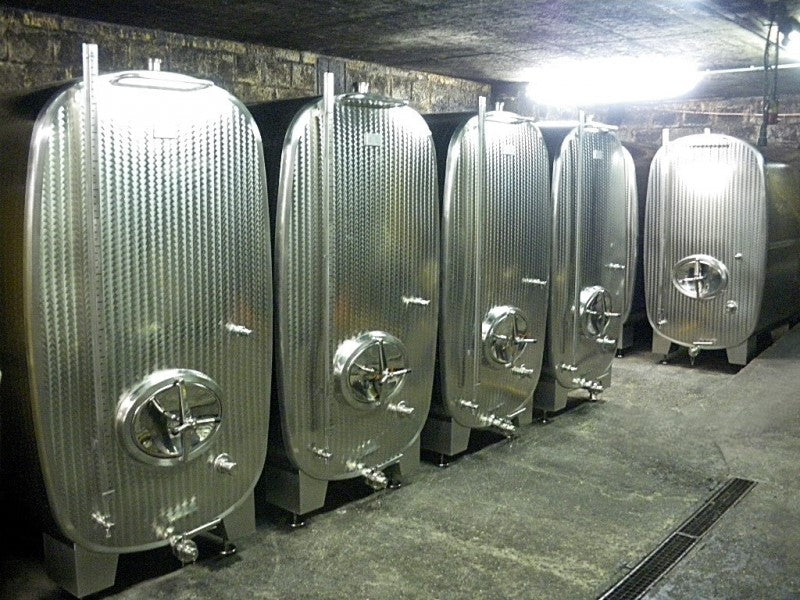
Wenn es um das Lagern und Abfüllen köstlicher Getränke, egal ob Wein, Bier, Spirituosen, Softdrinks, Säfte oder dergleichen geht, wird vor allem auf den Werkstoff Edelstahl (V4A) gesetzt, da dieser lebensmittelecht und gut zu reinigen ist. Er kann in jeglichen Größen zu Fässern oder auch Tanks geformt werden. So wird beispielsweise auch zur Herstellung von Wein teilweise zu Edelstahlfässern bzw. Tanks gewechselt, wobei diese so gut wie keinen Sauerstoff an den Wein heranlassen. So kann der Wein ganz für sich und von äußeren Einflüssen unberührt reifen. Durch diese Abschottung werden die Oxydationsvorgänge enorm verlangsamt und der Wein behält seine fruchtigen Aromen, sowie eine gewisse Knackigkeit. Die Verwendung von Edelstahltanks wird hauptsächlich bei der Herstellung von Weißwein eingesetzt.
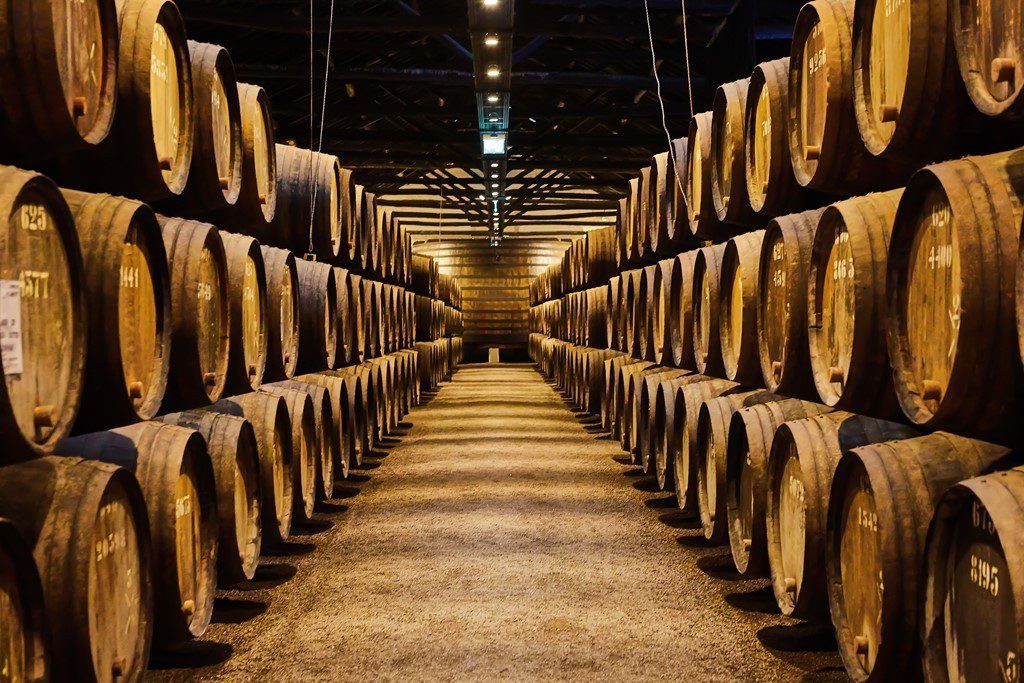
Bei den meisten Rotweinen hingegen oder auch bei edlen Weißweinen setzt man traditionell auf Holzfässer. Wobei es zahlreiche Größen an Holzfässern gibt. Das womöglich am meisten verwendete Holzfass wird „Barrique“ genannt, es wird aus Eichenholz gebaut und wurde erstmals im Mittelalter in der Region Bordeaux in Frankreich zur Weinherstellung genutzt. Mit einem Fassungsvermögen von gerade einmal 225 Liter, einer Höhe von fast einem Meter und einem Durchmesser von ca. 72 cm am Fassbauch, ist es damals wie heute noch relativ handlich und kann von zwei Personen gut transportiert (gerollt) werden.
Heute wird es besonders wegen seinem guten Verhältnis an Volumen zur Holzoberfläche verwendet. Durch die verhältnismäßig große Oberfläche im Vergleich zu größeren Fässern, bekommt der Wein durch das Holz hindurch mehr Sauerstoff ab, was den Reifeprozess beschleunigt. Zudem verleiht das verwendete Eichenholz dem Wein ein erweitertes Spektrum an Aromen und mehr Fülle im Geschmack. Neue Fässer geben mehr Aromen ab als bereits verwendete, deshalb werden kräftigere Rebsorten eher in neue und leichtere Sorten in bereits benutzte Barriques gesteckt. Da ein sowieso schon geschmackvoller Wein besser mit den stärkeren Aromen aus dem Holz harmoniert. Das Eichenfass gibt dem Wein nicht nur neue Aromen, es sorgt auch dafür, dass die sogenannten „Tannine“ im Wein abgeschwächt werden. Diese geben dem Wein eine trockene und herbe Note, welche durch Lagerung im Eichenfass milder ausfällt.
